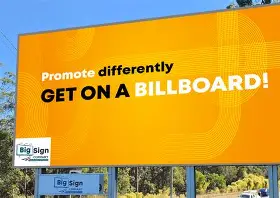How Real-Time Content on LAS Billboards is Changing Outdoor Advertising

Outdoor advertising has undergone a massive transformation in recent years. Once considered static and predictable, the industry has embraced cutting-edge technology to create dynamic, interactive experiences that capture attention like never before. One of the most exciting developments in this space is the rise of real-time content on LAS (Large Area Synchronized) billboards. These digital powerhouses are changing the way brands connect with audiences in public spaces, offering unprecedented flexibility, creativity, and relevance.
In this article, we’ll explore how real-time content is redefining outdoor advertising, what makes LAS billboards unique, and why advertisers are increasingly turning to this medium to engage modern consumers. We’ll also back this up with some compelling data and examples that showcase just how impactful this trend has become.
What Are LAS Billboards?
LAS (Large Area Synchronized) billboards are an advanced type of digital billboard that uses synchronized screens across large areas or multiple locations. These screens are digitally connected and controlled through a central system, allowing advertisers to push real-time content updates based on time, weather, location, or other data-driven triggers.
Think of them as the outdoor version of live-streaming platforms — but for ads. Whether it’s broadcasting live sports scores, showcasing trending social media content, or displaying custom promotions based on foot traffic patterns, LAS billboards offer a level of immediacy and customization that static billboards simply can’t match.
Real-Time Content: What Does That Mean?
Real-time content refers to digital media that updates instantly based on current events, data feeds, user interaction, or environmental conditions. In the context of LAS billboards, real-time content can include:
Live weather updates (e.g., showing umbrellas when it rains)
Countdown timers for product launches
Social media posts or tweets in real-time
Live traffic conditions with alternative routes
Sports scores or breaking news
Targeted promotions based on time of day or demographic flow
This content isn't just updated occasionally—it changes in real-time, which makes it much more engaging and effective.
Why Real-Time Content Works So Well
1. It Grabs Attention Instantly
In a world of digital noise, relevance is everything. Real-time content stands out because it speaks directly to what's happening right now. If it starts raining and the billboard switches to a waterproof shoe ad, that’s not just marketing — that’s timely problem-solving. It’s more likely to resonate with someone than a generic static image.
2. It Increases Engagement
Consumers today are used to personalized, interactive content. Real-time LAS billboard campaigns that include live social media feeds, polls, or even QR codes to claim a time-limited offer can make passersby stop and interact. This turns a passive viewer into an active participant.
3. It Reflects the Brand’s Personality
Real-time updates can allow a brand to respond to cultural moments in witty or empathetic ways. For instance, a coffee brand might show funny Monday memes on its LAS display to entertain morning commuters. That kind of relatability builds brand affinity.
Key Technologies Powering This Shift
1. Cloud-Based Content Management Systems (CMS)
Modern LAS billboards are managed through cloud platforms that allow for instant changes to content. Marketers can update a campaign across cities with just a few clicks — no printing, no physical installs, no waiting.
2. Data Integration
Real-time billboards often tap into APIs for weather, sports, stock prices, news, social media, and more. For instance, a fashion retailer might display “hot right now” items based on real-time browsing behavior on their website.
3. Geotargeting and Sensors
Advanced sensors can detect crowd density, foot traffic, and even vehicle types to trigger different messages. A car brand, for example, might target ads to luxury car owners passing by at peak traffic hours.
Real-World Examples of LAS in Action
Coca-Cola's Personalized Greetings
Coca-Cola famously used LAS digital billboards in a campaign where passersby could tweet their name using a hashtag and see it appear on a massive screen in Times Square. This simple, personalized interaction brought the “Share a Coke” campaign to life and created buzz across social media.
Nike's Real-Time Fitness Stats
During a marathon in Tokyo, Nike used LAS displays along the route to show runners' real-time pace and heart rates (voluntarily synced via an app). These dynamic updates boosted both participation and brand visibility — runners were literally racing alongside Nike’s digital encouragement.
McDonald’s Weather-Triggered Ads
McDonald’s UK ran a campaign where LAS billboards displayed different menu items based on the weather. If it was cold, hot drinks and soups popped up. If sunny, McFlurries and cold drinks appeared. It’s a brilliant way to match the mood and influence impulse buying.
The Numbers Don’t Lie
The impact of real-time, dynamic billboard content is not just anecdotal — it’s backed by data.
✅ Digital out-of-home (DOOH) advertising has been shown to increase brand awareness by 47% compared to static formats.
👉 Source: Nielsen
✅ A study by PQ Media predicts global DOOH ad revenue will grow to $32.1 billion by 2026, with real-time, data-driven content playing a central role in that expansion.
👉 Source: PQ Media
These stats underline a major shift: brands are moving budget away from static, traditional formats in favor of high-performing, flexible digital experiences like those offered by LAS billboards.
Benefits for Advertisers
1. Better ROI
When ads are updated in real-time, advertisers can adapt their messaging instantly to optimize for performance. If one creative isn't working, they can switch it out without additional costs. This agility leads to better ROI compared to static media.
2. Enhanced Measurement
Real-time campaigns can be tracked using integrated data analytics. Brands can measure foot traffic lift, engagement, conversions, and more — making it easier to justify and refine campaigns.
3. Environmental Impact
Because there's no printing or physical material waste, LAS billboards are a greener alternative. This matters more than ever, especially for brands aiming to be perceived as eco-conscious.
Challenges to Consider
Of course, no innovation is without its hurdles. Real-time LAS content requires:
Fast and reliable internet connections
Sophisticated CMS tools
Creative assets designed for dynamic triggers
Data privacy and compliance with regulations like GDPR
Additionally, not every market has the infrastructure for large-scale LAS deployment. Urban areas are leading the way, while rural adoption is slower.
The Future of LAS Billboard Advertising
We’re just scratching the surface of what's possible. With the integration of AI, augmented reality (AR), and 5G, LAS billboards will soon become even more immersive and responsive.
Imagine:
A sports brand showing holographic players interacting with the crowd in real time.
An AR filter popping up on a billboard for passersby to use on their phones.
Ads that auto-adjust brightness, messaging, or language based on the demographic walking by.
This future isn’t far off. In fact, several companies are already piloting such technologies in cities like Seoul, Tokyo, New York, and Dubai.
Final Thoughts
Real-time content on LAS billboards is more than just a flashy new advertising trend — it represents a fundamental shift in how brands communicate outdoors. In a time when consumer attention is fractured and fleeting, real-time engagement brings immediacy, relevance, and personality back into the public advertising space.
As more brands realize the power of this format, and as technology continues to improve, LAS billboards are poised to become a cornerstone of every savvy marketer’s strategy. The days of set-it-and-forget-it outdoor ads are over — welcome to the age of living, breathing, real-time outdoor content.
Note: IndiBlogHub features both user-submitted and editorial content. We do not verify third-party contributions. Read our Disclaimer and Privacy Policyfor details.







